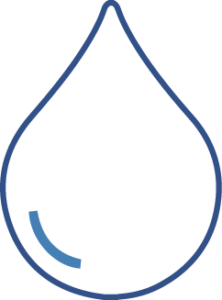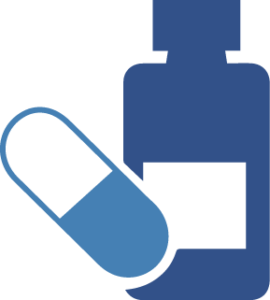Potential Future Applications
Owing to their role in intercellular communication, exosomes have shown strong diagnostic and therapeutic potential applications.

AT-HOME DIAGNOSTICS
At-home Diagnostics has been an enormous change in the diagnostics area, is a simple method that anyone can obtain and use without prescription. At-Home Diagnostics consist in a validated test that you collect and use in the comfort and convenience of your own home. Only biological samples (blood, urine, saliva) are required to perform this method. This accessibility gives the opportunity to individuals be proactive about their health, avoiding the need to go to the hospital or undergo more invasive medical test.
Major consumers of At-Home Diagnostics test are residents across North America and Europe, the augmented demand for this type of diagnosis is the accessibility and fast diagnosis. The prediction is the market progress at a CAGR around 5% over the period of 2020 to 2030. The low cost of the test is another factor that has helped the expansion of the market.
At-Home Diagnostics is giving the possibility to detect the presence of exosomes and microvesicles released into biological fluids. Exosomes and microvesicles transport proteins, mRNA, miRNA and lipid that could serve as biomarker for different types of diseases.

DIAGNOSTICS KITS
In recent years, exosomes and microvesicles have demonstrated enormous potential as non-invasive method for the diagnostics of different pathologies. Exosomes mediate intercellular communication by acting as vehicles transporting proteins, mRNA, miRNAs, and lipids from donor cells to recipient cells. Exosomes are remarkable stable in circulation and have been found in different biologics fluid (blood, urine, saliva) (PMID: 25834266). The detection of exosomes and their cargo have been proven to be an innovative rapid diagnostic test, which can be used for the detection of biomarkers of different pathologies, such as cancer (PMID: 26378496) or central nervous system pathologies (PMID: 31636538).
The diagnostic kits are a useful tool for collecting the clinical information needed to make a diagnosis, allowing patients and physicians to examine, detect and monitor diseases and conditions. Having a correct diagnosis is an essential aspect of clinical practice as it provides information about the health of patients and informs whether or not a patient has a pathology and needs treatment. The most basic parameters to be established in any diagnostic test are high sensitivity and reliability.
Exosomes using as a diagnostic tool are still in the early discovery stage and their potential value in clinical diagnostics in being explored. The global rapid medical diagnostic kits market size is expected to reach USD 18.0 billion by 2028. It is expected to expand at a CAGR of 3.4% from 2021 to 2028.
Major consumers of At-Home Diagnostics test are residents across North America and Europe, the augmented demand for this type of diagnosis is the accessibility and fast diagnosis. The prediction is the market progress at a CAGR around 5% over the period of 2020 to 2030. The low cost of the test is another factor that has helped the expansion of the market.
At-Home Diagnostics is giving the possibility to detect the presence of exosomes and microvesicles released into biological fluids. Exosomes and microvesicles transport proteins, mRNA, miRNA and lipid that could serve as biomarker for different types of diseases.

BLOOD PURIFYING
The Hemopurifier is a therapies device that filters the blood for the rapid removal of particles, this device allows rapid extracorporeal capture and selective retention of target particles from the entire circulatory system. Hemopurifier is a promising treatment strategy for the capture and removal of exosomes from the plasma and may replace or reduce the need for toxic drugs (PMID: 34692735). This technology consists of a plasma separator cartridge containing immobilized agents with affinity for the particles to be removed from the circulatory system. The hemopuriifier cartridge operates through a standard hemodialysis catheter. Blood enters the cartridge through the established pressure gradient, and within the extracapillary space contains specific affinity agents for the retention of particles or molecules of interest, such as exosomes. The elements of interest interact with the immobilized affinity agents to which target molecules or particles are selectively absorbed while blood cells and non-bound serum components pass though the device. The pressure gradient is reversed along the course inside the cartridge to allow the plasma to flow backward and recombine with the blood before re-entering the circulation. This device allows numerous antibodies and different affinity agents, such as aptamers and protein ligands, to be incorporated into the cartridges (PMID: 22738135).

THERAPEUTICS
Exosomes are secreted by most cell types and are responsible for carrying biological messages with the ability to effectively alter the biological response of the recipient cell. Exosomes are associated with immune responses, viral pathogenicity, cardiovascular diseases, central nervous system-related diseases, and cancer progression (PMID: 32029601). The intrinsic properties, structure and stability has advanced their potential utility for different therapeutic purposes, including vaccination, biological targeting agents and drug delivery tools (PMID: 32846024).
Exosomes can be used as cell‐free therapeutics with comparable potency, but better safety profile compared to original cell therapy. Recent studies are using exosomes as a novel therapeutic platform delivering therapeutic compounds for the treatment of different human diseases (PMID: 32846024). Moreover, therapeutic potential of exosome as therapeutic vehicles is also being investigated by loading active pharmaceutical ingredients (API) into exosomes to deliver APIs safely and specifically to the target tissues or cells via multiple exosome engineering technologies (PMID: 32029601). Exosome has the potential to act as a therapeutic vehicle due to its high specificity, low toxicity, protection of the cargo during transport and high cargo delivery efficiency (PMID: 27517914).

VETERINARY
Exosomes play a crucial role in cell-to-cell communication as carriers of important messages. Exosomes reach distant target cells, where they release their cargo (proteins, DNA, RNA, microRNAs, cytokines, metabolites, and lipids) (PMID: 32029601).
In recent years, exosomes have generated considerable scientific interest due to their extensive application in the diagnosis and therapeutics of human and animal diseases. Exosomes in both human and veterinary medicine find their major application in neoplastic diseases, but applications in the field of veterinary cardiology, nephrology, reproduction, parasitology, and regenerative medicine are currently being explored. Exosomes can therefore be used as diagnostic, prognostic, and, in some cases, therapeutic tools for several animal conditions (PMID: 34451863).
In veterinary medicine, exosomes are considered a new therapeutic tool in regenerative field, especially in joint and musculoskeletal disorders, such as osteoarthritis, tendon and ligament injuries and intervertebral discs degeneration (PMID: 32545382).

ISOLATION KIT
Exosomes contain RNA molecules and proteins which may serve as potential diagnostic biomarker for different types of diseases, being found abundantly in different biological fluids (urine, blood, saliva) (PMID: 28737826). Interest in exosome isolation has been increasing in recent years due to their known role in intercellular communication. Exosome isolation methods are very attractive in scientific research due to their multiple applications in the field of biomedicine. The ability to efficiently isolate exosomes is an important advantage in the research on early diagnosis of cancer, vaccine development, cell therapy, gene therapy and drug delivery. Reproducible isolation and enrichment of exosomes will facilitate the evaluation of their biological properties and their use as a therapeutic tool. There are numerous ongoing investigations looking to obtain an extraction or isolation method that is capable of isolating the largest number of exosomes with adequate size, high quality, yield and purity (PMID: 28737826).
Want To Start Investing With Us?
Investing in the novel technology of Exostatics can help accelerating the development of innovative solutions addressing potentially life-threatening conditions.
